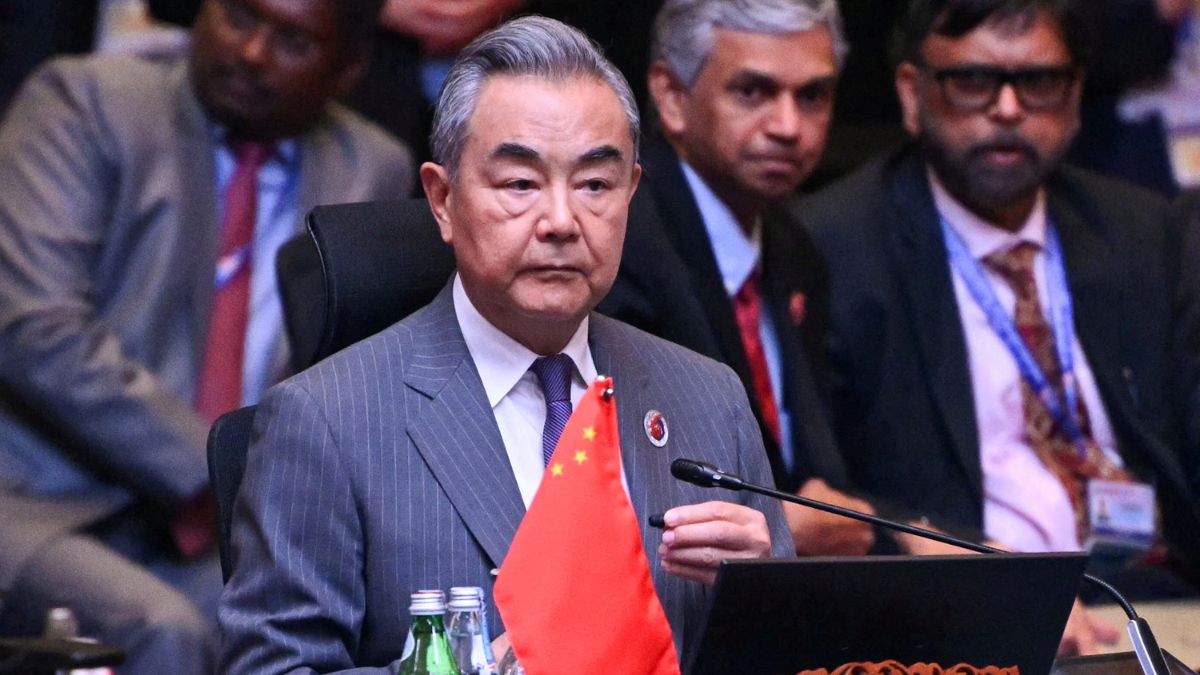After two days of high-level discussions in New Delhi, where China’s Foreign Minister Wang Yi met with India’s External Affairs Minister S Jaishankar and National Security Advisor Ajit Doval, Wang is now in Islamabad for the sixth edition of the China–Pakistan Foreign Ministers’ Strategic Dialogue from August 20 to 22.
Beijing has long sought to balance its engagements with India and Pakistan, but the timing of Wang’s stops – New Delhi followed immediately by Islamabad – highlights China’s signal to it’s all whether friend that is Pakistan.
Wang’s New Delhi meetings were part of the ongoing efforts to manage the strained relationship between the two Asian giants, which has not fully recovered from the clashes in Galwan Valley in 2020.
During his discussions, Wang highlighted the importance of restoring trust and emphasised that “a healthy and stable China-India relationship serves the fundamental and long-term interests of both of our countries.”
Indian officials viewed these words as a signal of Beijing’s willingness to ease tensions, particularly ahead of Prime Minister Narendra Modi’s planned trip to China later this year for the Shanghai Cooperation Organisation (SCO) summit.
Despite this conciliatory tone, India remains cautious.
Behind public statements of stability lies a parallel reality: Beijing continues to expand its strategic and military cooperation with Islamabad.
Editor’s Picks
Why Islamabad matters for Beijing
Wang Yi’s arrival in Pakistan comes at a time when the country is struggling with severe domestic challenges. The government of Prime Minister Shehbaz Sharif is under enormous strain from rising inflation, political unrest, and an economy heavily reliant on international bailouts.
By hosting Wang immediately after his Delhi meetings, Islamabad is looking to highlight its enduring partnership with China and present it as an anchor of support amid instability.
The Pakistani Foreign Office described the visit as part of “regular high-level exchanges between Pakistan and China to further deepen their ‘All-Weather Strategic Cooperative Partnership’, reaffirm support on the issues of respective core interests, enhance economic and trade cooperation, and reaffirm their joint commitment to regional peace, development and stability.”
This strategic dialogue, co-chaired by Wang and Pakistan’s Deputy Prime Minister and Foreign Minister Ishaq Dar, is the sixth such meeting between the two sides.
For Islamabad, the opportunity lies in seeking new commitments on infrastructure and investment projects, particularly under the China-Pakistan Economic Corridor (CPEC), as well as exploring avenues for further defence and political cooperation.
The CPEC dimension
At the heart of China-Pakistan cooperation is the China-Pakistan Economic Corridor. This initiative, which has been central to Beijing’s Belt and Road vision, involves billions of dollars in infrastructure projects, including highways, power plants, and ports.
However, India has consistently opposed CPEC, pointing out that many of its flagship projects pass through the illegally occupied part of Kashmir by Pakistan.
For Pakistan, expansion of CPEC or securing additional Chinese financing provides not only material benefits but also political capital.
It enables the government to claim that Beijing offers an alternative to reliance on Western lenders such as the International Monetary Fund, even though critics argue that such loans deepen Pakistan’s debt burden.
As China and the United States confront each other on trade and tariffs, Pakistan presents itself as a critical ally for Beijing in South Asia.
How Pakistan-China defence cooperation is growing close
Beyond infrastructure and finance, China remains Pakistan’s most important military partner. Over the years, Beijing has supplied Islamabad with fighter aircraft, missile systems, submarines, and air defence technologies.
Recent transfers include J-10C fighter jets and Hangor-class submarines, both of which enhance Pakistan’s military capabilities.
Chinese involvement also extends to supporting Pakistan’s newly established Rocket Force Command, which was inaugurated under Prime Minister Shehbaz Sharif’s leadership.
For India, these developments are cause for concern, as they demonstrate Beijing’s willingness to strengthen Pakistan’s military posture even while engaging in dialogue with New Delhi.
Beijing has deployed security forces to safeguard its assets in Pakistan, particularly after attacks by groups such as the Balochistan Liberation Army (BLA).
Ensuring the safety of Chinese workers and infrastructure remains a top priority for both sides during these strategic dialogues.
Wang Yi’s schedule in Islamabad includes not only meetings with government officials but also with Pakistan’s military leadership.
For India, this aspect is particularly sensitive. Any commitments China makes to the Pakistani military establishment have the potential to undermine the assurances Wang offered Indian leaders about easing tensions along the border.
Last month, Pakistan’s Chief of Army Staff, Field Marshal Asim Munir, visited Beijing and met with Vice President Han Zeng, Wang Yi, and senior military officials.
While he did not meet President Xi Jinping, unlike his predecessor Pakistan General Qamar Javed Bajwa, the visit reinforced the message that military-to-military cooperation remains strong.
How China’s balancing act has led to mistrust in India
Munir’s recent trip to the United States included a rare lunch hosted by President Donald Trump signalled tentative efforts to reset ties between Pakistan and the US.
Against this backdrop, Wang Yi’s visit to Pakistan serves as reassurance that Beijing’s partnership with Islamabad remains firm regardless of Islamabad’s outreach to Washington.
Addressing questions about this dynamic, Chinese Foreign Ministry spokesperson Mao Ning said, “The Pakistan-US relationship is a matter between the two countries. China and Pakistan are ironclad friends and all-weather strategic cooperative partners, and our bilateral relationship is not affected by any third party and does not target any third party.”
On India-Pakistan relations, Mao added: “We are willing to enhance friendly cooperation with both countries, and hope that differences between these two countries can be properly handled.” She further noted, “China stands ready to play a constructive role in light of their will.”
From India’s standpoint, while Chinese officials speak of peace and stability in talks with New Delhi, their immediate reinforcement of military and economic ties with Pakistan sends a different message.
This perception is not new.
India continues to remember the 1963 agreement in which Pakistan ceded the Shaksgam Valley – part of Indian territory under Pakistan’s occupation – to China.
The valley remains under Chinese control to this day, serving as a historical example of Sino-Pakistan coordination at India’s expense.
In more recent years, India has also voiced concerns about Chinese actions in its neighbourhood. These include the construction of a massive dam on the Yarlung Zangpo, which threatens downstream flows into the Brahmaputra, and the docking of Chinese survey vessels in Sri Lanka and the Maldives, often under the pretext of scientific research.
Such activities add to Indian anxieties about Beijing’s intentions, even as dialogue at the highest levels continues.
China’s dual approach is not lost on Indian policymakers.
With inputs from agencies
End of Article

)

